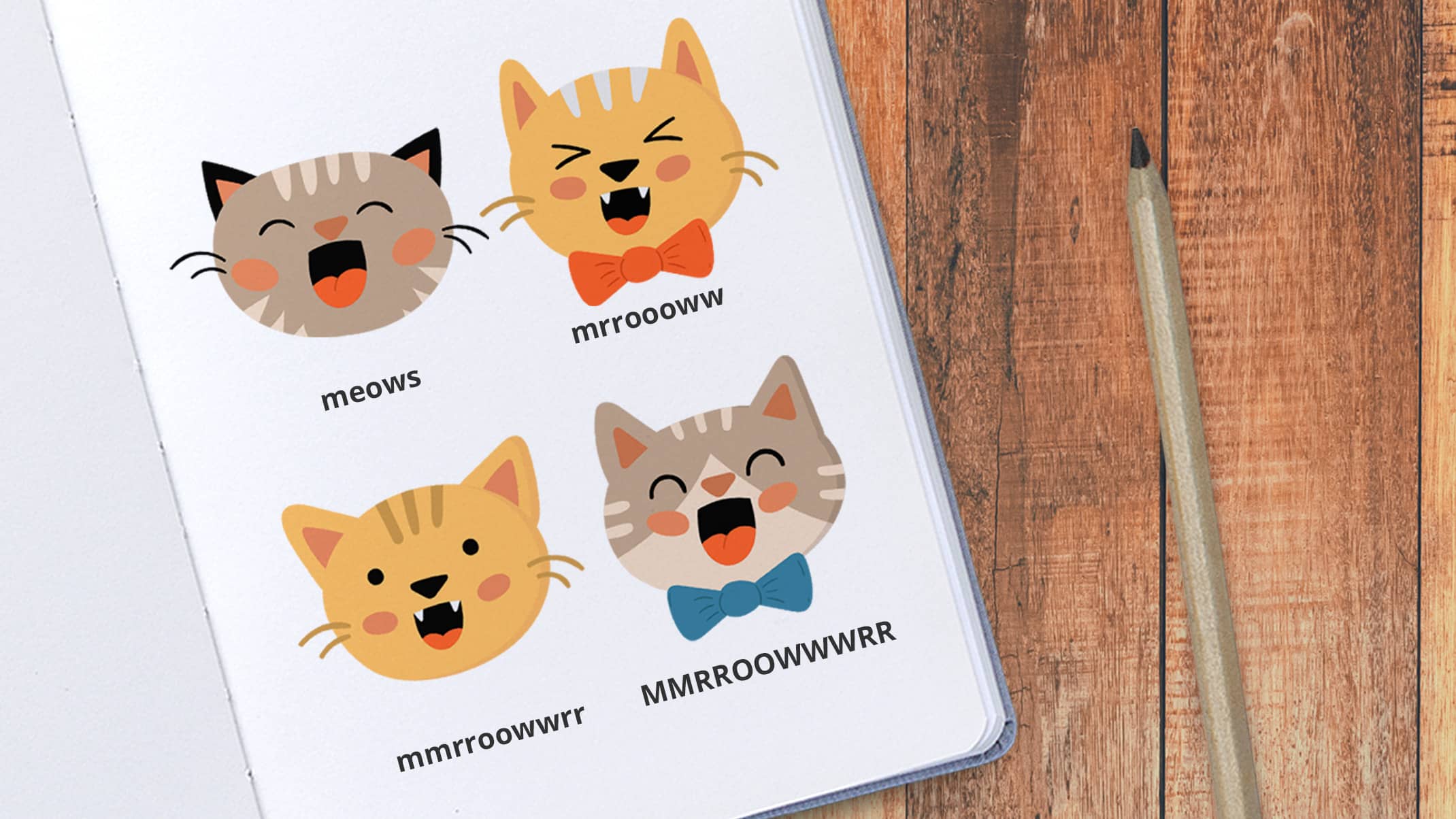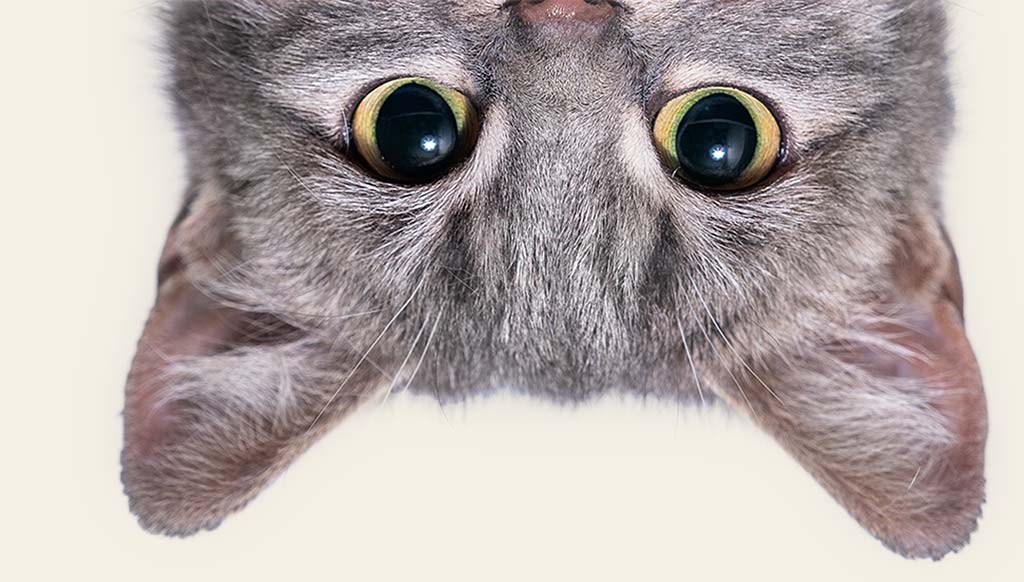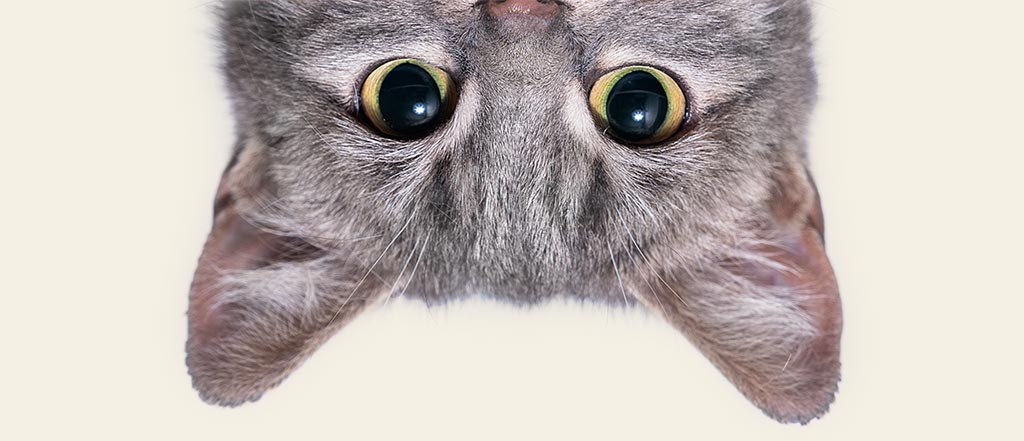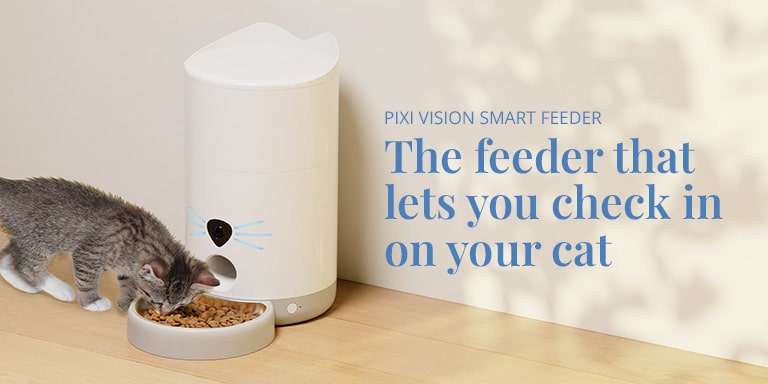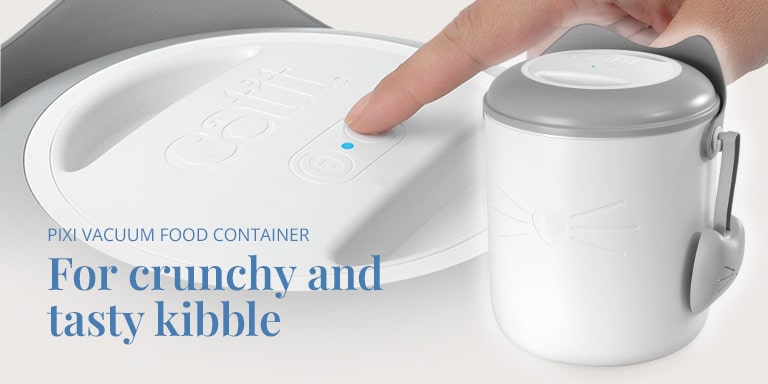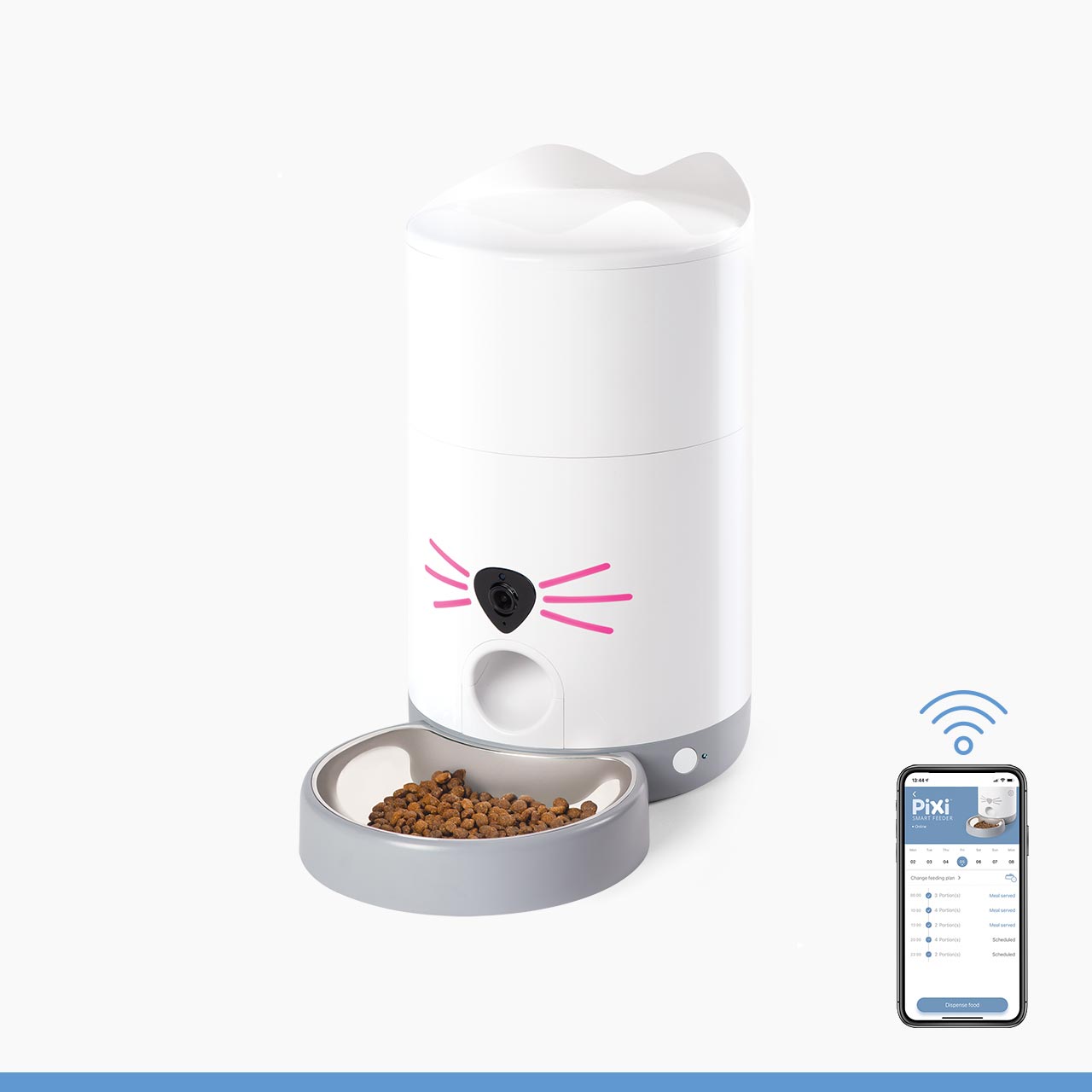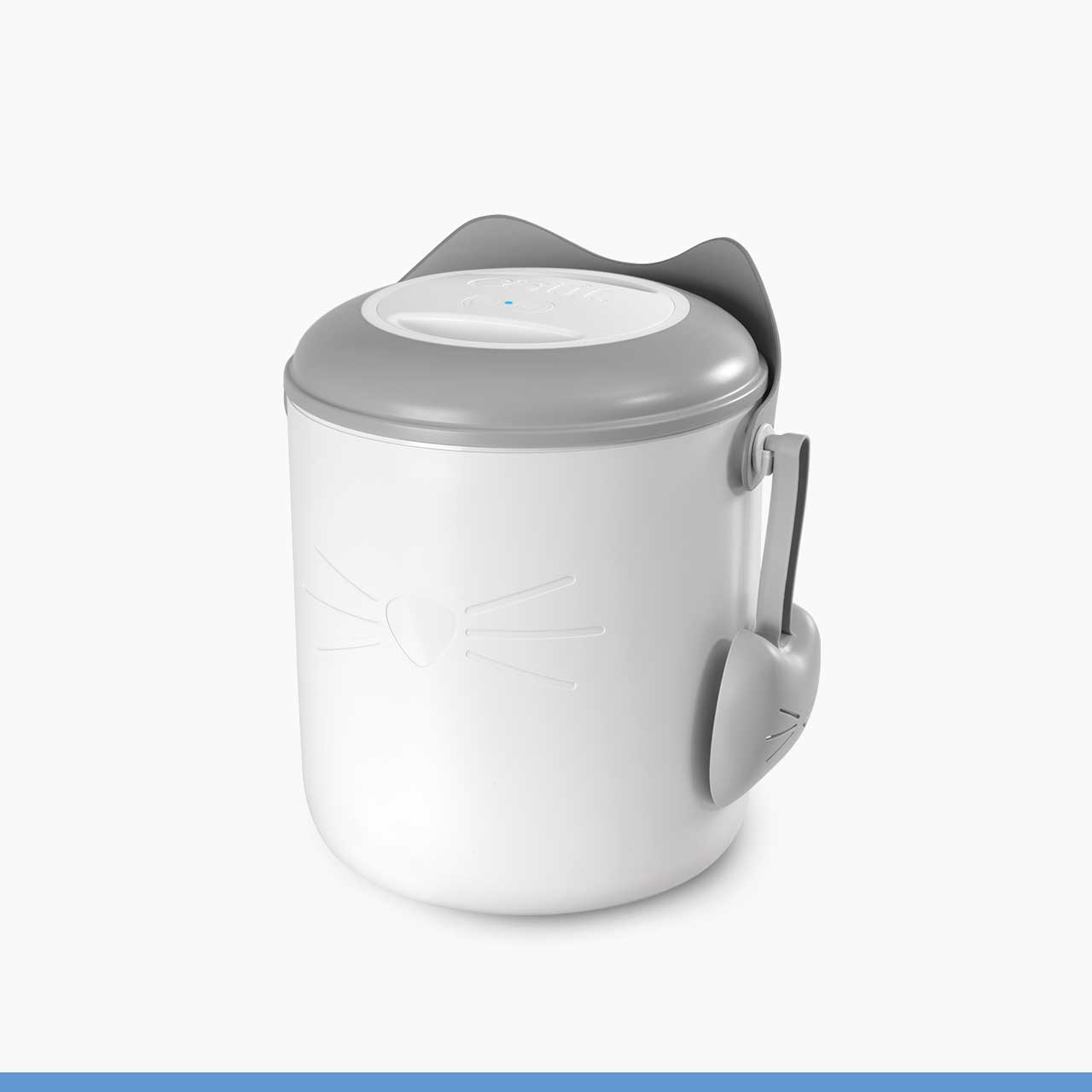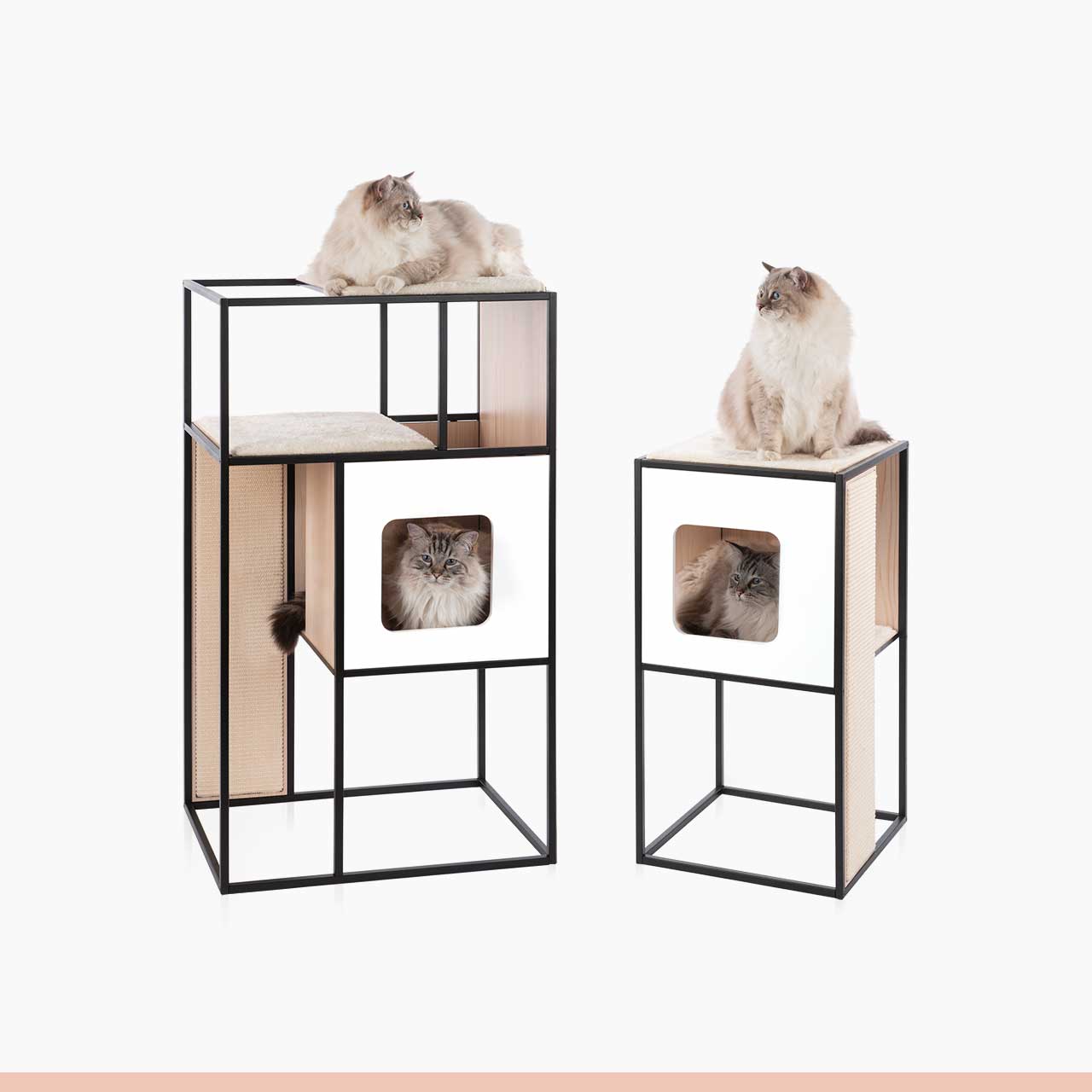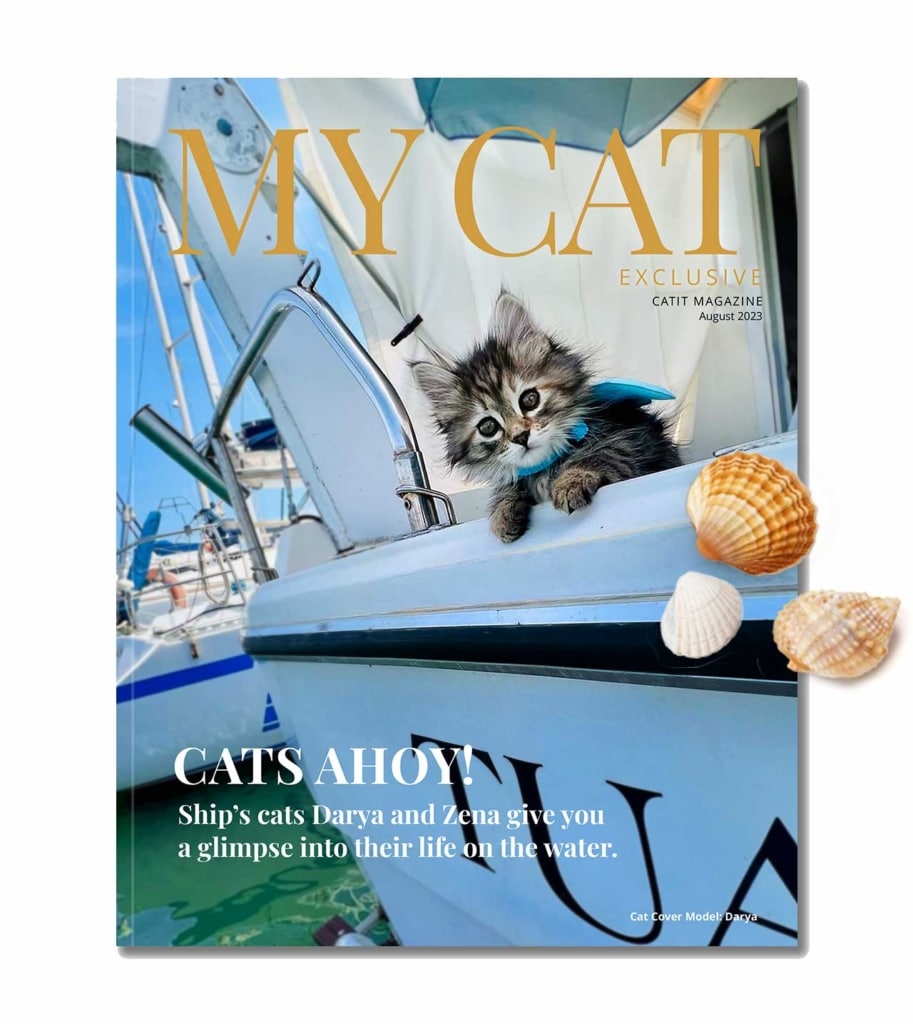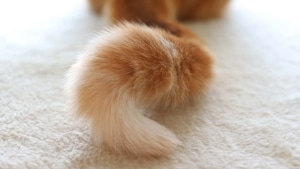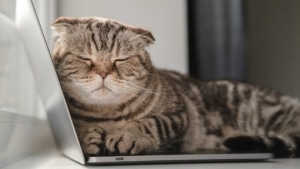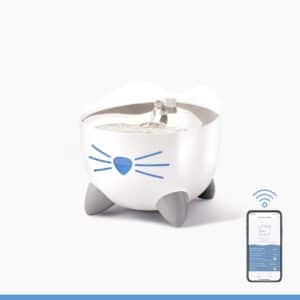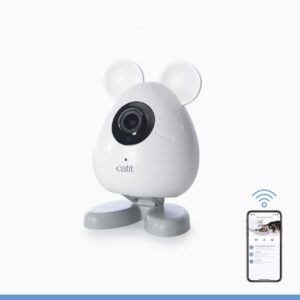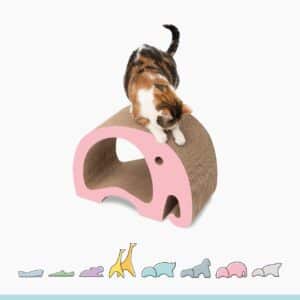Meow
Did you know that cats will almost never meow at other cats? That’s right, that little raspy voice is just for you! Some cats are very vocal while others barely make a sound. Breeds like the Siamese will meow up a storm while the Persian, for example, is typically a very quiet breed. However, each individual cat is different.
There are dozens of different types of meows. Pleasant sounding meows are usually used as a friendly greeting or a request for food, while unpleasant sounding meows tend to be used as a demand or a complaint.
Here is a short list that might help you to decode your cat’s language. However, we aren’t licensed cat translators, so your cat just might have a different way of expressing themself:
- Short, high-pitched mew
greeting. “Hello, human!” - Multiple high-pitched mews
excited greeting. “Hi human! I’m so happy to see you!” - Regular meow
gentle request for something. “Can I please have a treat?” - Long, drawn-out mrroooww
demand. “Open that door NOW!” - Grumpy, low-pitch mmrroowwrr
a complaint. “My food bowl is still empty!” or “Stop annoying me!” - Loud, high-pitch MMRROOWWWRR
anger or pain: YOU JUST STEPPED ON MY TAIL!
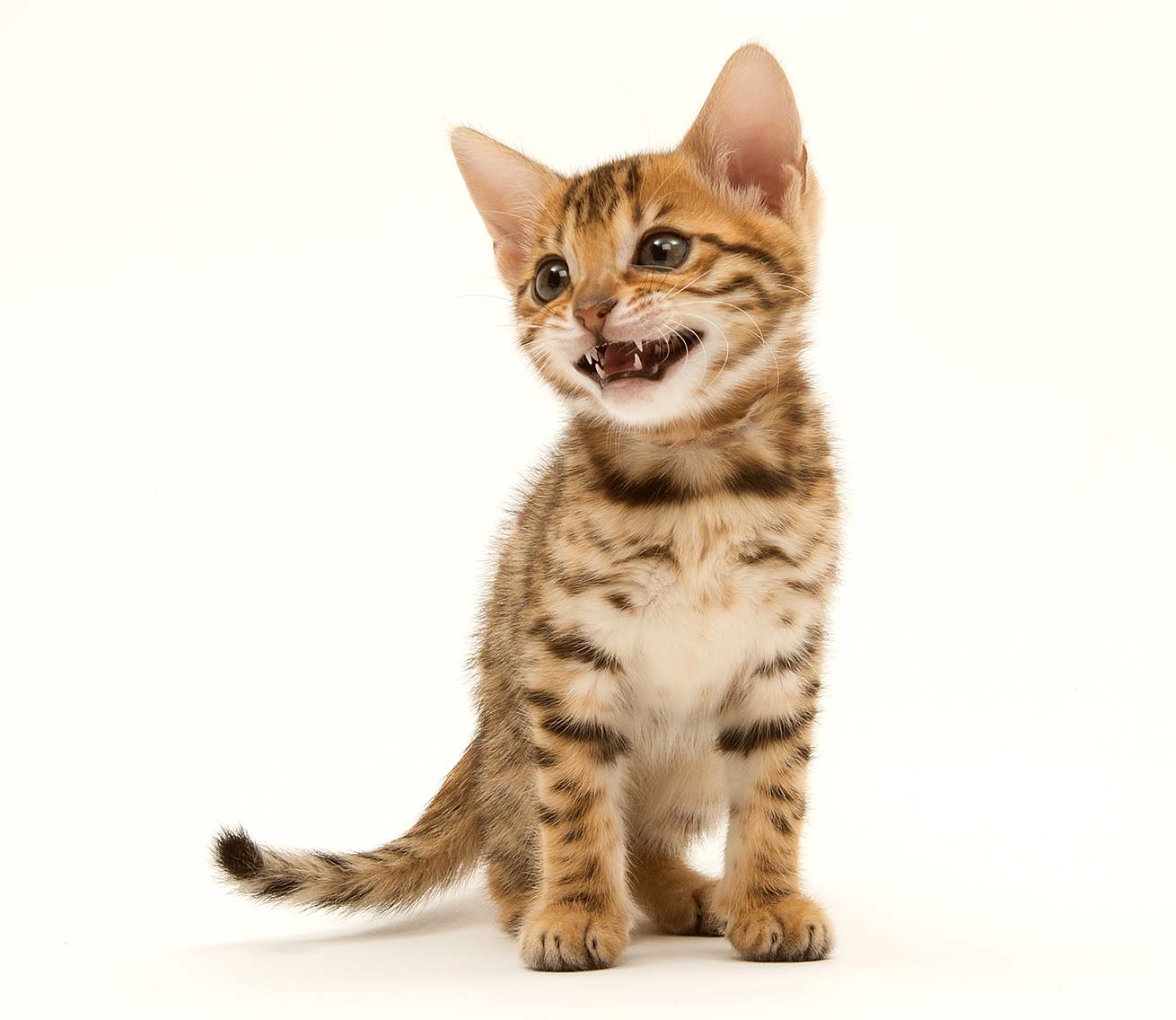
Let’s have a look at some other vocal sounds that your cat might produce:
Purr
Few things are more soothing than having a purring cat near. This low-pitched, continuous rumble is usually a sign of contentment and even helps us humans unwind. Don’t worry if your cat only rarely purrs. Some cats just don’t seem to know how to do so, and not all cats’ purr is equally loud.
Cats mostly purr when they are happy or content. This is the purring that you hear when your cat sits in your lap or when you pet your feline. However, it’s important to know that cats can also purr when they are stressed or in pain. This is sort of a self-soothing mechanism. You can distinguish this purr from the happy purr by observing your cat’s body language.
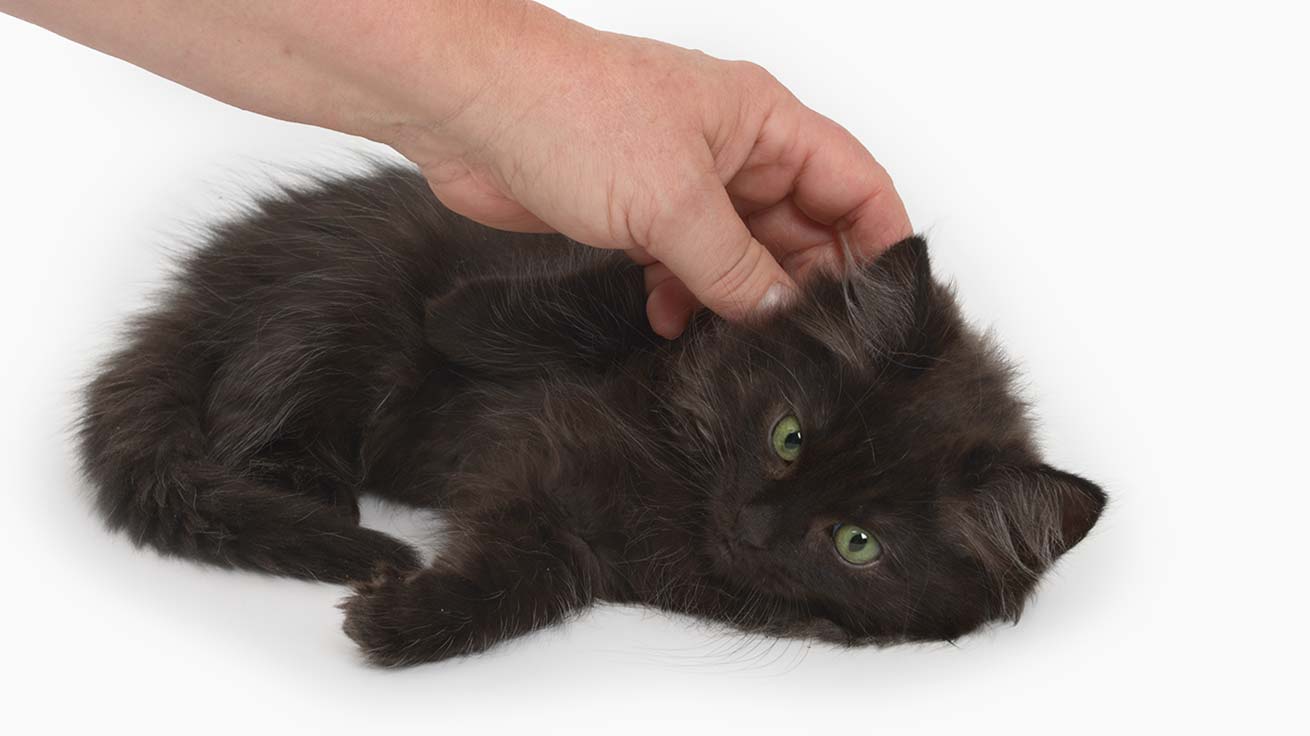
Trill
A trill is the little ‘prr’ sound used by kittens to attract their mom’s attention. So once the kitten grows into adulthood, it will trill to attract your attention. It can be a greeting (hi there, human!), a declaration (look at this!), a sign of playfulness (come play with me!) or just a declaration of sheer happiness.
Never miss an issue of the FREE My Cat Exclusive digital magazine!
Chatter
Cat chatter, which is sometimes also referred to as cat chirping, is this ‘ekekek’ sound that cats usually make while staring at a prey. Cats will chatter or chirp when they are confronted with an animal or an object that they desperately want to hunt but cannot reach – usually birds.
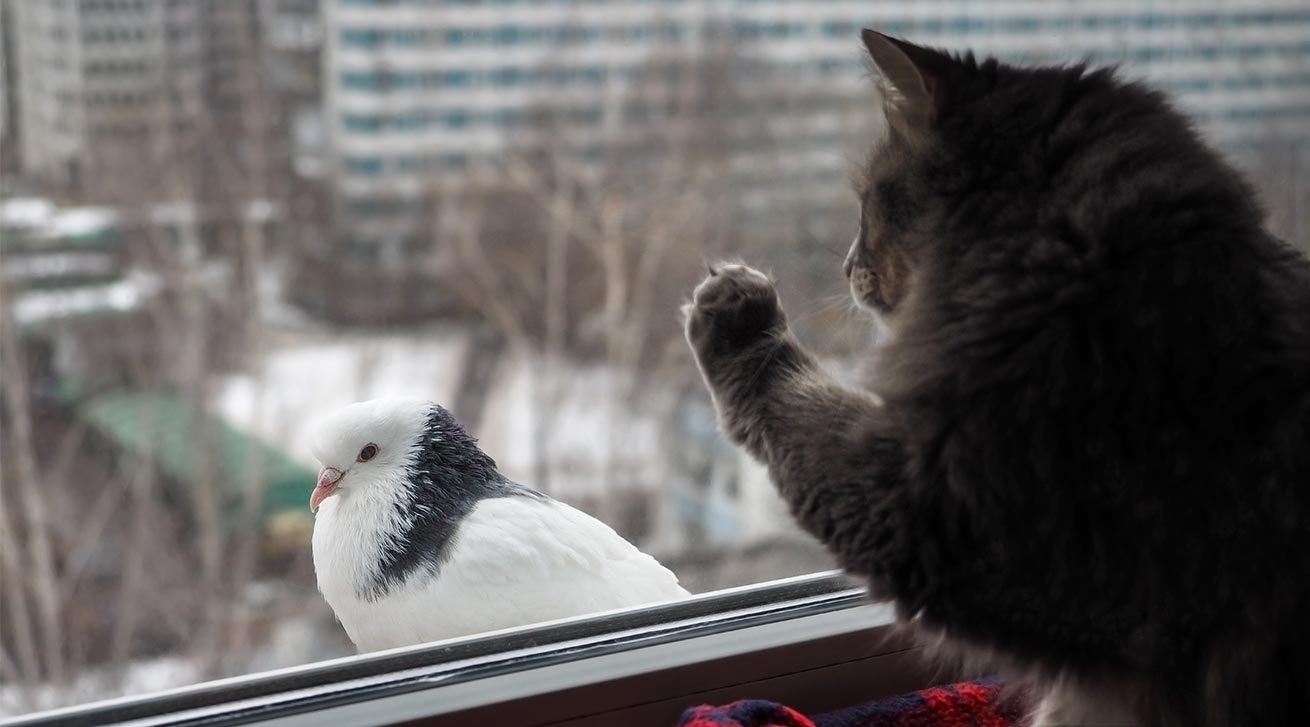
Yowl
Yowling is pretty much the cat equivalent of howling. There are various reasons why your cat might yowl. One of these reasons is boredom, for example when you are asleep at night so your beloved feline is not getting any attention. Another reason why cats yowl is when they are feeling uncomfortable, for example when they feel scared, threatened, or when they are about to throw up. Some cats yowl when they are about to get an episode of the zoomies.
Hiss
Contrary to popular belief, cats do not hiss when they are angry – they hiss because they are frightened or feel threatened. Hissing is a warning for you to stay away. The best response from your end would be to leave your cat alone. If a cat hisses when you touch a certain spot on their body, they might be in pain. Please take your feline to the vet to make sure there are no health issues.
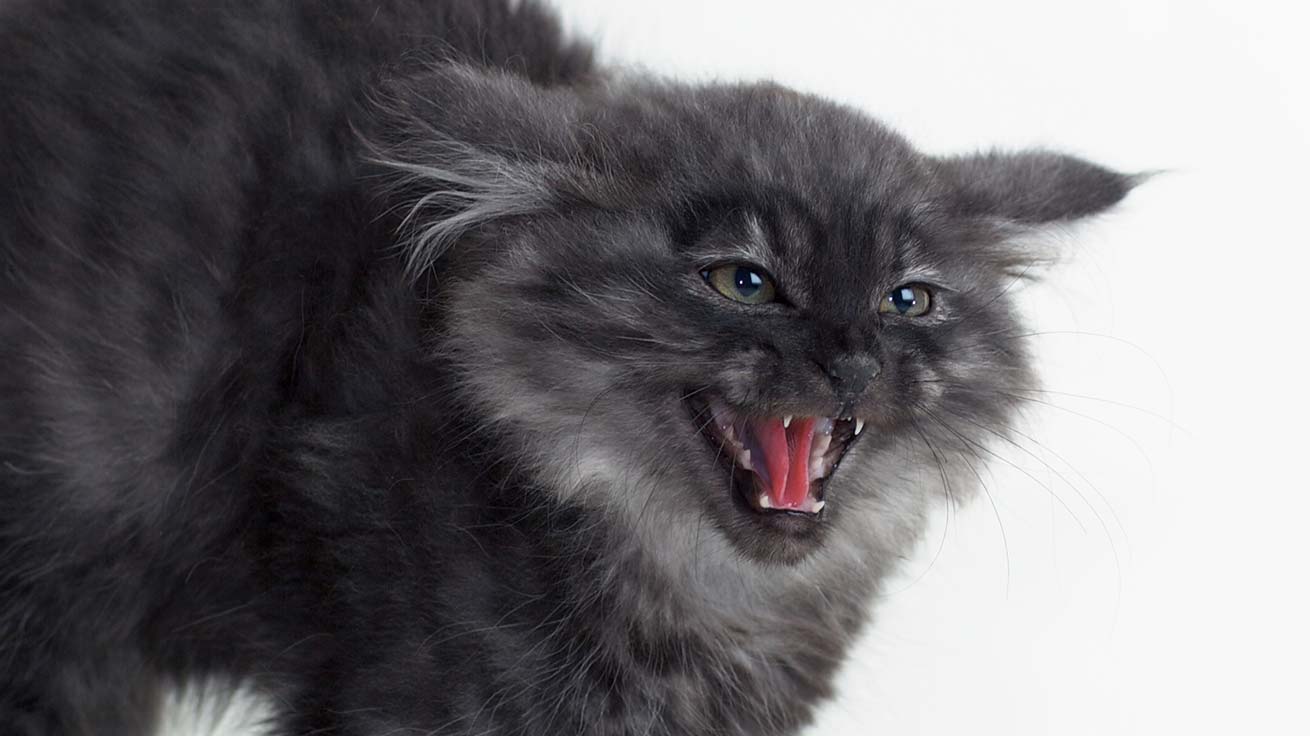
Growl
While hissing is a warning to stay away, growling is even a step further. When a cat growls, they really mean business and might be ready to attack. A deep growl means that your cat is seriously angry and it would be best to stay away. Kittens might hiss or growl at each other when roughhousing to let each other know when the other kitten is being too rough. When adult cats growl at each other, it’s usually best to intervene before a fight breaks loose.
Caterwaul
Female cats in heat will make a sound that is called caterwauling to attract prospective mating partners. This sound is very similar to yowling, yet it sounds hollower and is usually shorter.
